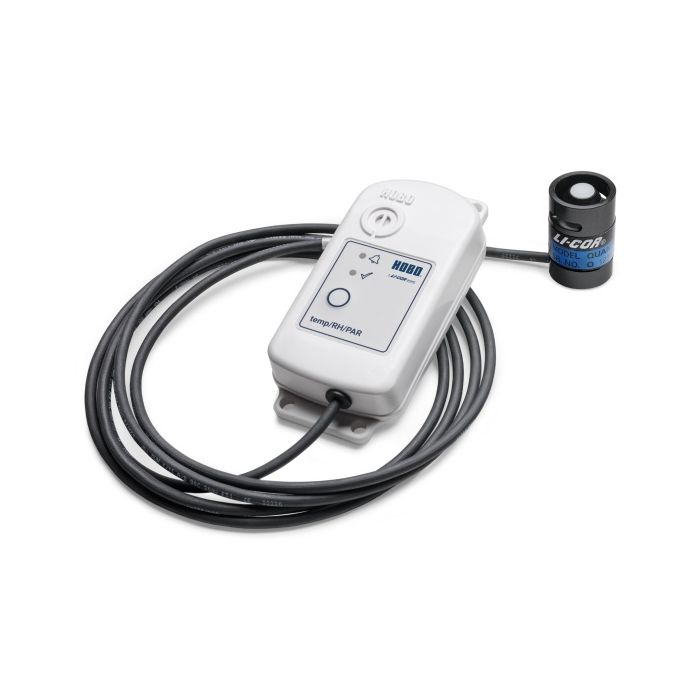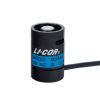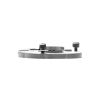HOBO MX2308 Temp/RH/PAR Logger
Features
- Fast, easy logger setup and download via phone or tablet (up to ~100 ft range)
- PAR sensor delivers research-grade light intensity for both sunlight and indoor grow light conditions
- Automatically calculate VPD for a complete view of greenhouse climate conditions
- Free ground shipping
- Expedited repair and warranty service
- Lifetime technical support
- More
Overview
Rugged and Bluetooth-enabled, the MX2308 delivers research-grade monitoring of key growing conditions—photosynthetically active radiation (PAR), temperature and relative humidity—all in a single device. Whether you’re growing plants in a commercial greenhouse, managing indoor vertical farms, fine-tuning conditions in hydroponic systems, or conducting agricultural or ecological research, the MX2308 gives you the data you need to optimize conditions for growth, health, and productivity.
Built for simplicity and flexibility, this all-in-one logger integrates with the LI-COR 190R PAR sensor, the industry standard for light measurement that's trusted by researchers worldwide for its precision in measuring photosynthetically active radiation (PAR). This versatile logger is designed to operate reliably across diverse environments, from high-tech vertical farming racks to outdoor experimental plots to support informed decisions around lighting, ventilation, and irrigation without the complexity or high costs of traditional monitoring systems:
Examples of Monitoring Applications for the MX2308 Temp/RH/PAR Logger:
- Growers, Farmers & Producers: Helps optimize growing conditions, improve yield consistency, and reduce disease risk for commercial greenhouse and indoor farming operators and hydroponic/aquaponic growers by monitoring where it matters most.em 1 text.
- Researchers & Educators: Wireless setup and data retrieval enable flexible deployment across experimental sites, with data quality ideal for agricultural researchers, plant scientists, and university programs without the budgetary or logistical barriers typical of research-grade systems.
- Ag Tech & Innovation Teams: Ease of deployment and integration-ready data formats make an ideal sensor platform for prototyping or scaled trials needed for companies innovating in lighting optimization and climate control solutions.
Setup and data retrieval are seamlessly simple—no cables or additional download devices needed using the free HOBOconnect app on your phone or tablet. Effortlessly configure the logger and download data via Bluetooth (up to a 100 ft range), which allows you to deploy in and download data from hard-to-reach spots.
Expand your remote monitoring by adding an MX Data Plan, which allows you to upload data to LI-COR Cloud remote software for further analysis, sharing, and more.
Temperature: -40 to 70 °C (-40 to 158 °F); Accuracy ±0.2 °C (typical) within 0 to 70 °C; Resolution 0.04 °C
Relative Humidity: Range 0–100% RH; Accuracy ±2.5% (typical) from 10% to 90% RH; Resolution 0.01% RH
PAR Range: 0 to 3,000 μmol/m²/s (full sunlight)
PAR Accuracy: ±5% typical (LI-190R factory calibration)
PAR Spectral Range: 400–700 nm (PAR waveband)
Calculated Metrics: Vapor Pressure Deficit (VPD) in kPa, and Daily Light Integral (DLI) in mol/m²/day (computed from logged data)
Logging Interval: User-selectable from 1 second up to 18 hours
Memory Capacity: ~35,000 sets of measurements
Wireless Range: Up to 30.5 m (100 feet) line-of-sight via BLE
Enclosure Rating: IP67 (NEMA 6)
Battery: 2/3 AA 3.6 Volt Lithium; User-replaceable
Operating Environment: -40 to 70 °C, 0–100% RH
In The News

























